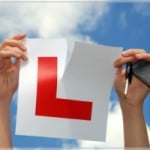Manual Transmission
Manual driving is the use of a manual gearbox which normally involves a gear stick as well as a clutch. This is operated by your left foot in order to change gears in a vehicle while your right foot is controlling the break and gas pedals.
One of the biggest setbacks that can be seen from learning manual driving is the learning curve. There is a large learning curve as when compared with automatic transmission vehicles because the process of changing gears and operating the clutch takes skill. The transition from one gear to the next has to be smooth and becoming experienced in doing so requires a lot of practice. Developing a feel for engaging the clutch as well as changing gears is needed in order to drive smoothly. This is why most inexperienced drivers will experience stalling and jerking or jumping of the car. This can be especially dangerous on a small road or highway.
Although manual transmission might be more difficult to learn, it is still vastly sought after due to the benefits that it carries.
Benefits
Fuel costs
Manual transmission cars lack the bloodsucking fuel consumption that an automatic transmission car has. This is because of the automatic transmission hydraulic pump which causes the car to move despite no acceleration applied on the vehicle. Manual transmission cars also do not require active cooling because they are simpler than automatic transmission cars and weigh less than their counterparts.
Long Lasting and Costs
Because manual transmission cars have generally less moving parts than automatic transmission, they require lesser maintenance and costs much less to maintain. Another huge difference is that can also be observed is that manual transmission cars generally cost much less than automatic transmission cars. You can stand to save approximately $4000-$5000 for opting for a manual transmission car.
Control and Performance
Manual transmission generally has a higher selection of gear ratio which makes it more suitable especially if you want to have more control over the vehicle. The driver can choose to fully exploit the engine power at high or low speeds. Because the driver has more direct control over the car’s RPM as well as gear transmission, the driver can control the amount of torque that goes to the wheels and maneuverer accordingly.


Leave a Reply
Want to join the discussion?Feel free to contribute!